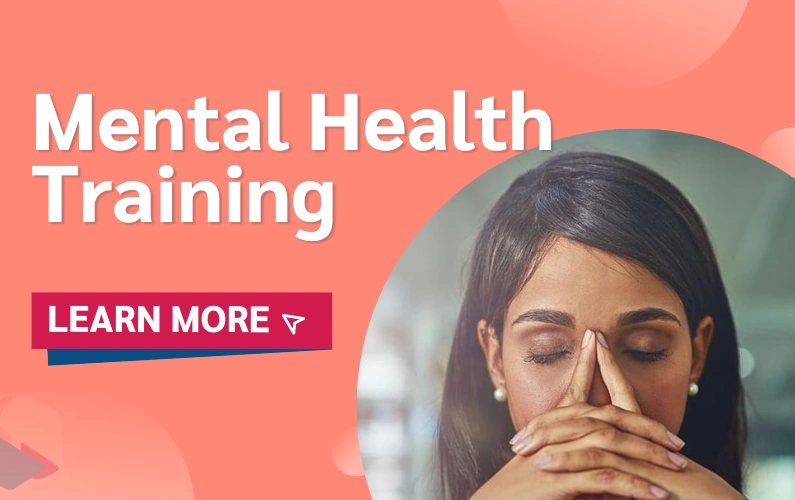Self-harming is the act of an individual committing harm to themselves. It is typically a cry for help and can affect anyone at any age. There is no stereotypical profile for a self-harmer so care workers need to understand the warning signs in order to deduce whether someone is engaging in self-harming behaviour. This article highlights some of the common self-harming signs and triggers that care workers may come across.
Identifying the warning signs can be a complicated process. Self-harmers typically carry out self-harm in private and will go to great lengths to keep others from seeing evidence of their activities.
|
Did you know... |
What are the warning signs for somebody who is self-harming?
Typically, people associate self-harming with the acts of cutting their own skin with tools such as razors, knives or scissors. Unfortunately, self-harming involves other behaviours that include:
- Overdosing - taking a high quantity of over-the-counter, illegal or prescribed drugs
- Impact with objects - this self-harming behaviour includes banging or punching objects to the point of bruising or bleeding
- Burning skin
- Hair-pulling (trichotillomania) - a medical condition where a person feels compelled to pull out their own hair and even ingest the hair
- Interfering with healing - the individual purposefully hampers the healing of wounds
- Rubbing objects into the skin - this behaviour involves the rubbing of sharp objects, such as glass
- Self impact - banging or punching themselves to the point of bleeding or bruising
.webp?width=795&name=Untitled%20design%20(31).webp)
Overdosing on drugs is a sign of self-harm.
Warning signs for specific behaviours may be particular to that behaviour, though common signs might include:
- Secrecy, such as keeping a specific drawer locked or hiding specific items
- Unexplained cuts and bruises on the body
- Wearing long clothing (sleeves and pants), even in warm weather
- A breakdown in general communication
- Mood swings or mood changes
- Changes to eating patterns
- Changes to sleeping patterns
- Changes to socialising patterns
- Evidence of drug or medical documentation (IE leaflets, pamphlets)
- Evidence of carrying unnecessary sharp objects, matches or lighters
- Loss of interest in favourite hobbies or sports
Risk factors of self-harming
The chances of an individual engaging in self-harming can be increased if they have experienced specific conditions prior to the act. These risk factors, if present and in conjunction with the common warning signs, can help identify the likelihood that the individual is self-harming.
Common risk factors include:
- A history of being bullied
- A history of bullying others
- A history of sexual abuse
- A history of physical abuse
- A history of neglect
- Mental illness in the family
- Substance abuse in the family
- Depression

Swings or changes in a person's mood may be a sign of poor mental health.
Self-harming and stress
Stress is another known factor that can lead to or aggravate aspects of self-mutilation. In this instance, the act of self-harming leads to the individual associating self-harming with a coping mechanism for any increase in their stress levels. According to a survey on self-harming by three leading youth charities, nearly a quarter of all male self-harming victims, from 16-24 years old, used it as a way to cope with stress and pressure.
What can self-harming awareness training teach you?
At Flexebee, we offer courses tailored to the care sector profession. Our Self-Harm Awareness course includes modules that discuss the following:
- What self-harm is
- Self-harm in relation to current society
- Self-harming signs
- How to identify different types of self-harm
- Triggers and causes of emotional distress that could result in self-harm
- How to manage and support those at risk or involved
- Information of help that is available and the most effective methods
For further training related to mental health, go to our Mental Health page.
Further reading:
If you are worried about an individual that is showing signs of self-harm, the following list of mental health charities should be able to offer specific advice or support.
Let us know your thoughts in the comments.

.webp?width=240&height=73&name=Logo%20R%20Homepage%20White%20Final%20Horizontal%20Large%20NEW%20small%20(2).webp)
.webp?width=243&height=74&name=Logo%20R%20Homepage%20White%20Final%20Horizontal%20Large%20NEW%20small%20(2).webp)




.webp?width=50&name=Cyber%20Essentials%20Badge%20Large%20NEW%20(72dpi).webp)

.webp?width=100&name=tp-5star-white%20(2).webp)
COMMENTS